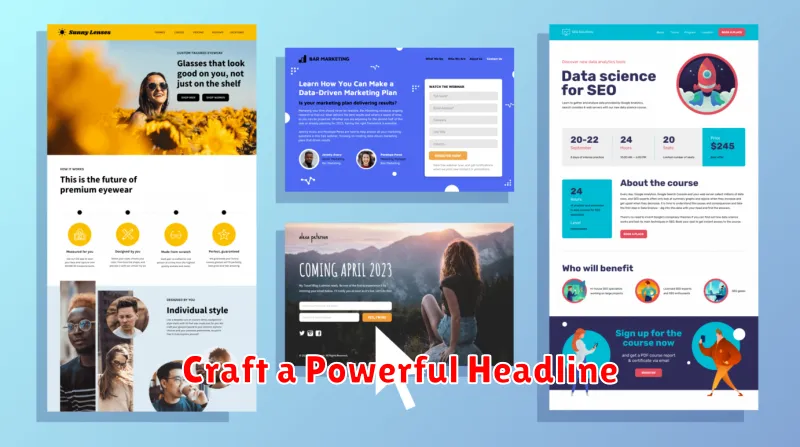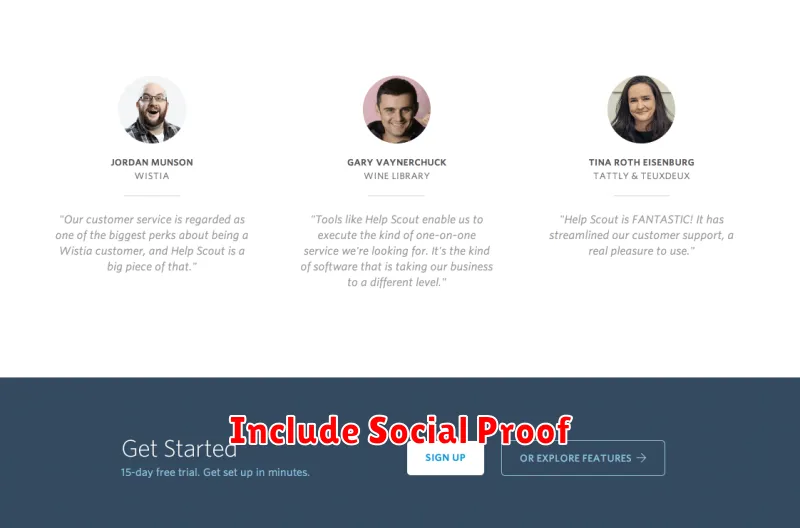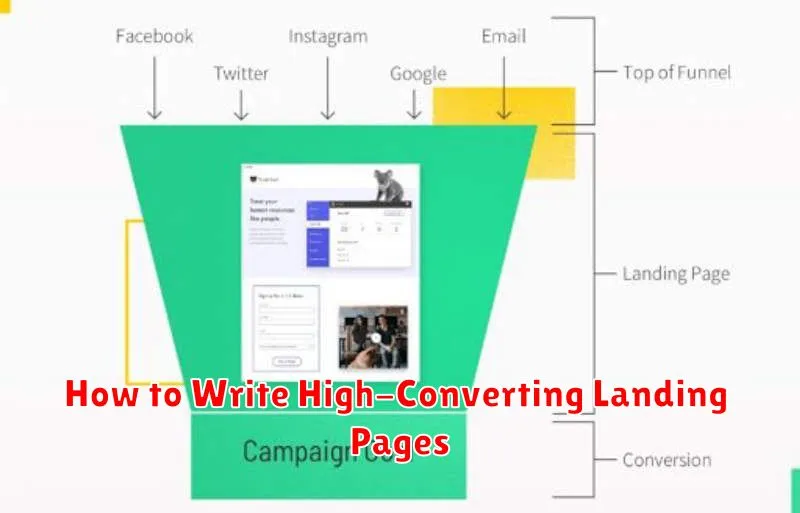Creating high-converting landing pages is crucial for any successful online marketing campaign. A high-converting landing page is designed with a single, focused objective: to persuade visitors to take a specific action. This action, known as a conversion, could be anything from making a purchase, signing up for a newsletter, downloading a resource, or requesting a demo. Understanding how to construct these high-converting landing pages is essential for maximizing your return on investment and achieving your marketing goals. This article will delve into the key strategies and tactics required to build landing pages that convert visitors into customers.
In the competitive digital landscape, simply driving traffic to your website isn’t enough. You need to optimize your landing pages to effectively capture leads and drive conversions. This involves understanding your target audience, crafting compelling copy, designing a user-friendly interface, and employing effective calls to action. By mastering the art of creating high-converting landing pages, you can significantly enhance your online marketing efforts and achieve substantial business growth. Let’s explore the essential elements that contribute to a successful landing page.
Know Your Landing Page Goal
Before crafting your landing page, clearly define its objective. What action do you want visitors to take? A well-defined goal is crucial for a successful landing page.
Common landing page goals include:
- Lead Generation: Capturing contact information through forms.
- Product Sales: Driving purchases of a specific product or service.
- Event Registrations: Encouraging sign-ups for webinars, workshops, or conferences.
- Content Downloads: Offering valuable resources like ebooks or white papers in exchange for information.
Focus on a single, primary goal for each landing page. Trying to achieve too much can confuse visitors and dilute your message. A clear goal informs your design, copywriting, and call to action.
Craft a Powerful Headline

Your headline is the first, and often only, impression you make on a potential customer. A compelling headline is crucial for grabbing attention and enticing visitors to read further. It should clearly and concisely communicate the value proposition of your landing page.
Focus on creating headlines that are benefit-oriented. Instead of simply stating what your product or service is, highlight what it can do for the reader. Address their pain points and offer solutions. For example, instead of “New Email Marketing Software,” try “Increase Your Email Open Rates by 50% with Our Powerful New Software.”
Brevity is key. Aim for headlines that are clear, concise, and easy to understand at a glance. Avoid jargon and technical terms. Consider using numbers or data to further enhance the impact and credibility of your headline.
Test different headline variations. A/B testing allows you to compare the performance of different headlines and determine which resonates best with your target audience. Track metrics such as click-through rates and conversion rates to identify the most effective approach.
Use Clear and Concise Copy
Visitors to your landing page are often short on time and patience. Clarity and conciseness are crucial for effectively communicating your message and driving conversions.
Use short, impactful sentences and avoid jargon or technical terms your target audience may not understand. Focus on the benefits of your product or service, not just its features. Explain clearly what problem you solve and how you’re different from the competition.
Strong calls to action are essential. Tell visitors exactly what you want them to do, whether it’s signing up for a free trial, downloading a resource, or making a purchase. Use action-oriented verbs like “Get Started,” “Download Now,” or “Learn More.”
Consider using bullet points or lists to highlight key information and make it easier for visitors to scan and digest the content.
Include Social Proof

Social proof is a powerful tool for building trust and credibility, which directly impacts conversion rates. By showcasing positive experiences from others, you can alleviate potential customer hesitations and encourage them to take action.
Several methods can effectively incorporate social proof on your landing page:
- Testimonials: Feature short, impactful quotes from satisfied customers. Focus on specific benefits or results they achieved.
- Reviews: Display star ratings and reviews from platforms like Google, Yelp, or industry-specific review sites.
- Case Studies: For more complex products or services, delve deeper into customer successes with detailed case studies.
- Data/Numbers: Showcase impressive statistics, like the number of customers served, products sold, or awards won.
- Media Mentions: If your brand has been featured in reputable publications, highlight these mentions to build authority.
Strategically positioning social proof elements throughout your landing page can significantly influence visitor behavior and ultimately drive conversions.
Highlight Benefits Over Features
Visitors to your landing page are primarily concerned with what your product or service can do for them. Therefore, it’s crucial to emphasize benefits over features. While features describe what your product is or does, benefits explain how those features improve a customer’s life or solve their problems.
For example, instead of simply stating “Our software has a drag-and-drop interface” (feature), explain the benefit: “Easily build beautiful landing pages in minutes without coding, saving you time and resources” (benefit).
Focus on the value proposition. Clearly articulate how your offering addresses a specific pain point or fulfills a desired outcome for your target audience.
| Feature | Benefit |
|---|---|
| 24/7 Customer Support | Get immediate assistance whenever you need it, ensuring peace of mind. |
| Advanced Analytics Dashboard | Track key metrics and make data-driven decisions to optimize your campaigns. |
Design for Mobile Responsiveness
In today’s mobile-first world, ensuring your landing page is responsive is no longer optional—it’s essential. A significant portion of your audience will access your page from their smartphones or tablets. A non-responsive design leads to a poor user experience, driving potential customers away.
Key elements of a mobile-responsive design include:
- Fluid layouts: Content adjusts seamlessly to different screen sizes.
- Scalable images: Visuals resize proportionally, preventing pixelation or cropping.
- Optimized typography: Font sizes and line heights are readable on smaller screens.
- Touch-friendly navigation: Buttons and links are easily tappable with fingers.
Test your landing page across a range of devices to confirm proper functionality and appearance. Prioritizing mobile responsiveness contributes significantly to higher conversion rates by catering to the largest segment of your audience.
A/B Test for Better Results
After launching your landing page, the work doesn’t stop. Continuous optimization is key to maximizing conversions. This is where A/B testing comes in. A/B testing (also known as split testing) involves comparing two versions of a landing page to see which performs better.
Create two versions (A and B) with a single element changed. This could be the headline, the call to action button, the image, or the layout. Show each version to a similar segment of your audience and track their behavior.
Analyze the results to determine which version achieved a higher conversion rate. Metrics to consider include click-through rates, form submissions, and purchase completions. Implement the winning version and continue testing other elements to further refine your landing page.

